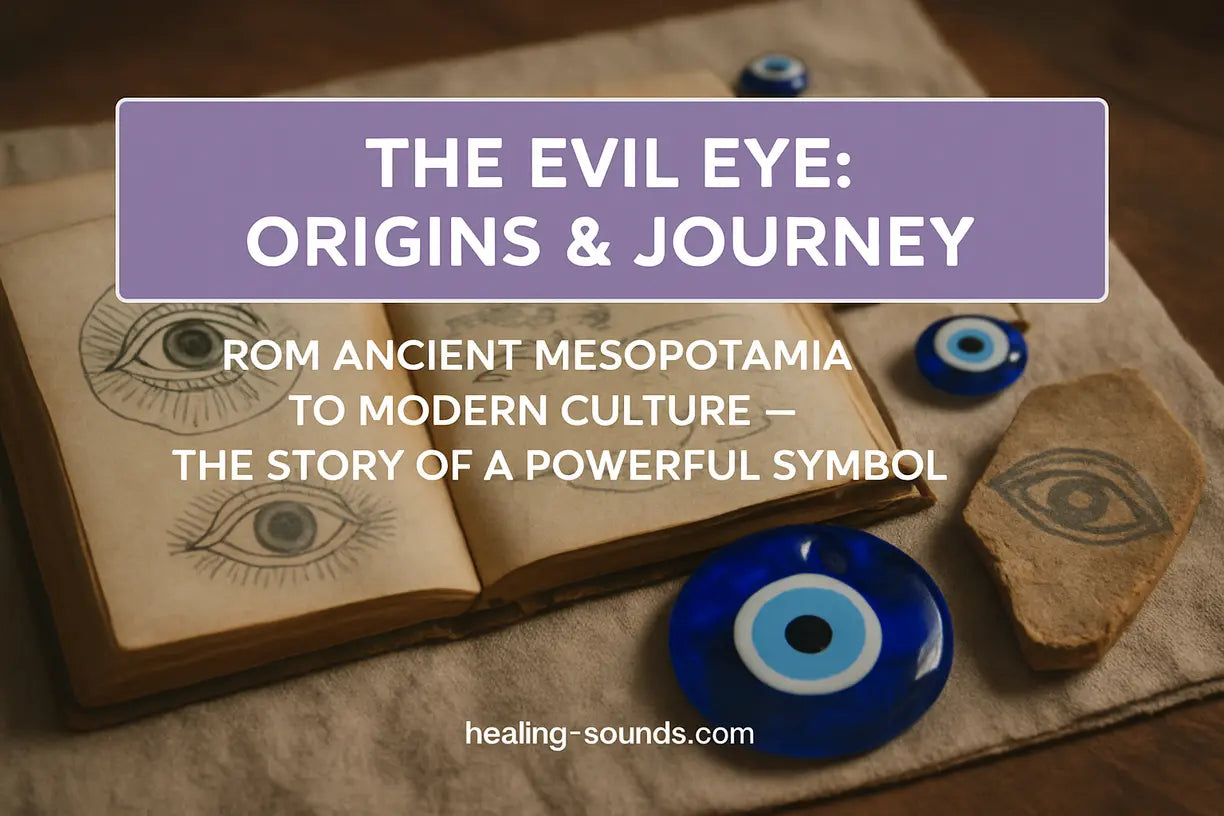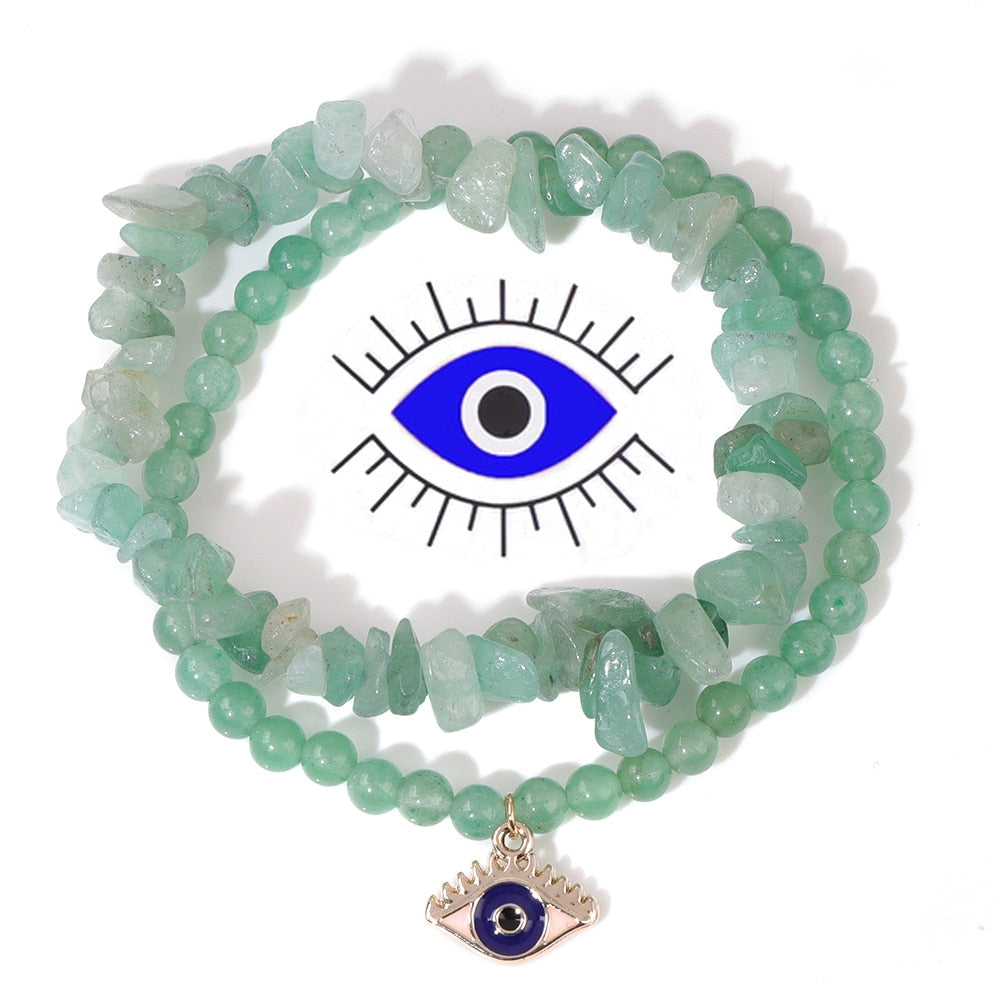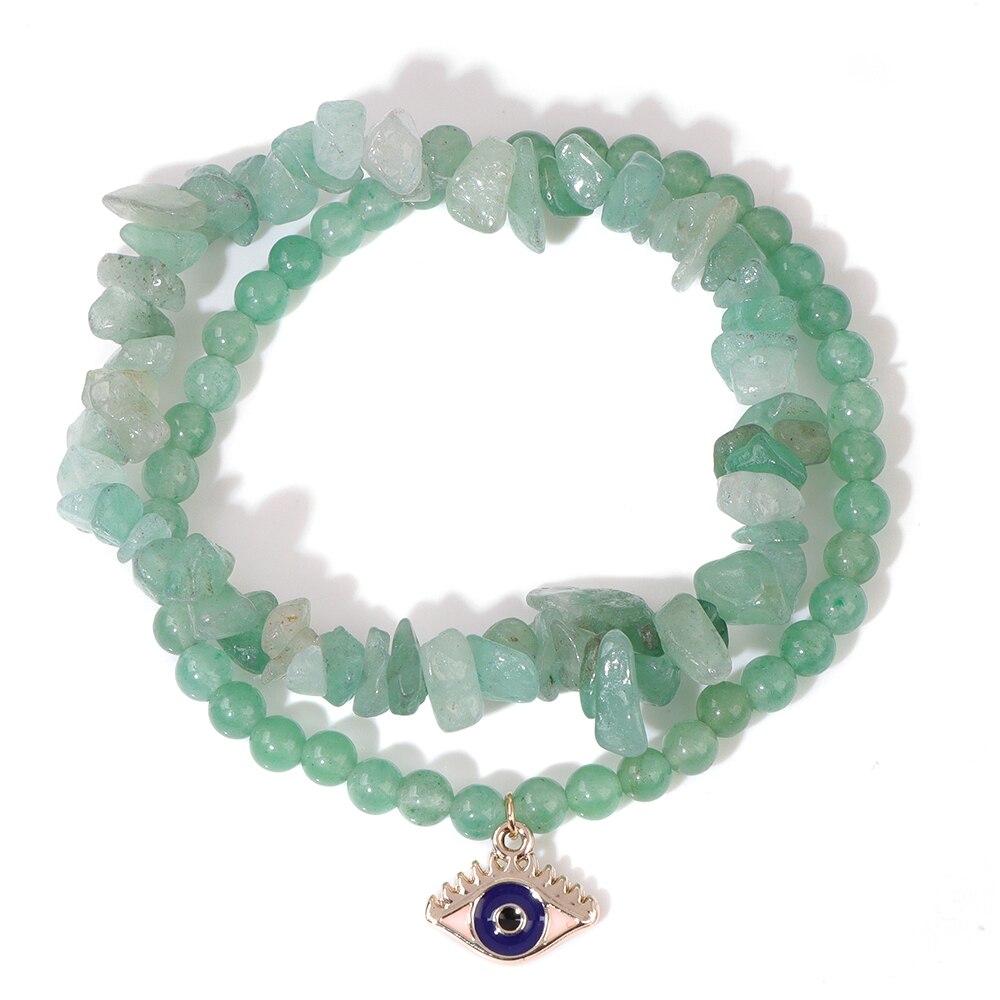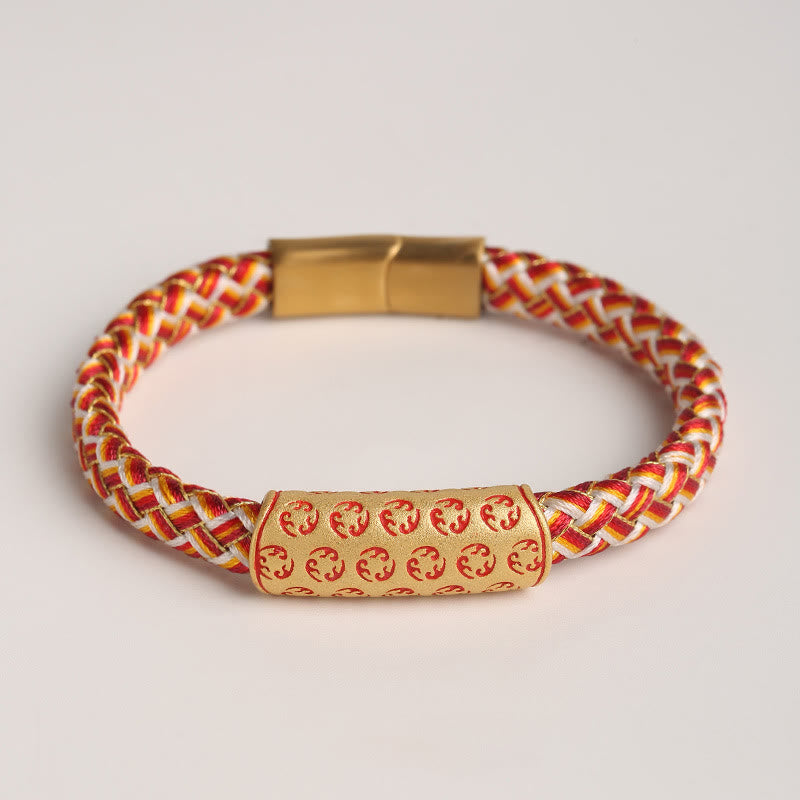Das Konzept des bösen Blicks, eines bösartigen Blicks, der Unglück oder Schaden bringen soll, fasziniert und verunsichert Kulturen seit Jahrtausenden. Die Geschichte des bösen Blicks ist mehr als nur ein Aberglaube. Sie ist eine faszinierende Reise durch alte Zivilisationen, vielfältige Folklore und beständige Symbolik. Wenn Sie sich jemals über den Ursprung des bösen Blicks oder die Verbreitung seines ikonischen blauen Augenamuletts gewundert haben, begeben Sie sich auf eine kulturelle Entdeckungsreise. Dieser Artikel befasst sich mit der reichen Vielfalt an Glaubensvorstellungen, Traditionen und Schutztalismanen, die dieses uralte Phänomen ausmachen, und verfolgt seinen Weg von den Anfängen der Geschichte bis zu seiner heutigen Bedeutung für alle, die sich für Spiritualität und kulturelles Erbe interessieren.
Die alten Wurzeln: Woher kommt der böse Blick?
Der Glaube an den bösen Blick ist keine neue Erfindung; seine Ursprünge reichen bis in die Antike zurück. Einige der frühesten Beweise für seinen Ursprung finden sich im alten Ägypten und Sumer (Mesopotamien) vor über 5.000 Jahren, wo Augenidole geschaffen wurden, möglicherweise zum Schutz. Formaler dokumentiert wurde das Konzept jedoch erst im klassischen Griechenland. Die alten Griechen, darunter Philosophen wie Platon und Plutarch, diskutierten die Fähigkeit des Auges, schädliche Strahlen auszusenden, die aus Neid oder Bosheit entstanden. Sie glaubten, dass ein böswilliger Blick Krankheit, Unglück oder sogar den Tod bringen könne. In dieser Ära wurden „apotropäische“ (Unheil abwehrende) Objekte geschaffen, oft mit übertriebenen Augen, die den schädlichen Blick auf seinen Ursprung zurückwerfen sollten. Der Glaube war so tief verwurzelt, dass Augenmotive auf Trinkgefäßen, Mosaiken und sogar Schiffen üblich waren, um Unglück abzuwehren. Die Idee war, dass „Gleiches Gleiches abwehrt“ – ein abgebildetes Auge konnte die Macht des bösen Blicks abwehren.

Archäologische Funde im Mittelmeerraum und im Nahen Osten belegen die weit verbreitete Angst vor dem bösen Blick und die gleichzeitige Entwicklung von Schutzmaßnahmen. Das Verständnis dieser alten Wurzeln ist der Schlüssel zum Verständnis der anhaltenden Macht und der globalen Reichweite der Geschichte des bösen Blicks .
Evolution durch Kulturen und Zeit
Mit dem Aufstieg und Untergang von Imperien und der Verbindung entfernter Länder durch Handelsrouten verbreitete sich der Glaube an den bösen Blick und die damit verbundenen Schutzsymbole weit und breit. Das Römische Reich übernahm und verbreitete viele griechische Glaubensvorstellungen, darunter die Angst vor dem „oculus malus“ (bösen Blick). Von dort durchdrang er Kulturen in ganz Europa, dem Nahen Osten, Nordafrika und schließlich durch Entdeckungen und Migration nach Lateinamerika und Teilen Asiens. Jede Kultur passte den Glauben an ihre eigene Weltanschauung an und schuf einzigartige Rituale und Talismane, doch das Kernkonzept des bösen Blicks blieb bemerkenswert gleich. In der Türkei beispielsweise wurde der „nazar boncuğu“ (eine blau-weiße Glasperle) zu einem ikonischen Schutzsymbol, während in Italien der „cornicello“ (ein hornförmiges Amulett) einen ähnlichen Zweck erfüllte. Der Ursprung des bösen Blicks mag uralt sein, doch seine Anpassungsfähigkeit sicherte sein Überleben und seine Bedeutung in unterschiedlichsten Gesellschaften.
Diese weitverbreitete kulturelle Übernahme unterstreicht ein universelles menschliches Anliegen: die Anfälligkeit gegenüber unsichtbaren negativen Kräften und den Wunsch nach Schutz. Das folgende Video bietet einen guten Überblick darüber, was der böse Blick in verschiedenen Traditionen darstellt.
Die Verbreitung dieses Glaubens wird auch in verschiedenen religiösen Texten dokumentiert, darunter in der Bibel und im Koran. Dort wird oft vor Neid und seinen schädlichen Auswirkungen gewarnt, die den Kern des Glaubens an den bösen Blick bilden. Die Entwicklung der Überlieferung vom bösen Blick zeigt, wie uralte Ängste vor sozialen Interaktionen und Neid über Jahrhunderte hinweg symbolisch interpretiert und bewältigt wurden.
Wichtige historische Meilensteine des bösen Blicks:
- Altes Mesopotamien und Ägypten (ca. 3000 v. Chr.): Die ersten Augenidole und Amulette tauchen auf und deuten auf einen beginnenden Glauben hin.
- Klassisches Griechenland (ca. 6. Jahrhundert v. Chr. – 4. Jahrhundert v. Chr.): Philosophen dokumentieren das Konzept; weit verbreitete Verwendung apotropäischer Augensymbole.
- Römisches Reich (ca. 27 v. Chr. – 476 n. Chr.): Verbreitung des Glaubens in ganz Europa und Nordafrika.
- Mittelalter und Osmanisches Reich: Verfestigung ikonischer Symbole wie des Nazar Boncuğu in der Türkei und der weiteren islamischen Welt.
- Moderne Ära: Globale Verbreitung durch Migration und erneutes Interesse an Folklore und spiritueller Symbolik.
Die Symbolik des Auges 🧿: Mehr als nur ein Blick
Das wichtigste Symbol zur Bekämpfung des bösen Blicks ist passenderweise das Auge selbst. Dabei handelt es sich oft um ein stilisiertes Auge, das am häufigsten in Blautönen dargestellt wird. Die Farbe Blau gilt in vielen Kulturen, die mit dem bösen Blick in Verbindung gebracht werden, als äußerst schützend. Der Glaube an den Himmel oder das Wasser – Elemente, die als rein und lebensspendend gelten – rührt vermutlich von ihrer Verbindung her. Man nimmt auch an, dass blaue Augen im Mittelmeerraum und im Nahen Osten, wo der Glaube am stärksten verbreitet war, selten waren, was sie einzigartig und wirksam gegen den gewöhnlichen „bösen Blick“ machte. Das Augenamulett fungiert als direkter Reflektor der schädlichen Energie und sendet sie zurück zum eifersüchtigen Betrachter. Die Bedeutung des 🧿 Emojis, das heute weltweit anerkannt ist, ist ein direkter digitaler Nachfahre dieser alten Schutzamulette und verdeutlicht die anhaltende Kraft und Anpassungsfähigkeit des Symbols.

Auch die für diese Amulette verwendeten Materialien haben eine besondere Bedeutung. Glas erfreute sich vor allem in der türkischen Tradition großer Beliebtheit, da man glaubte, dass das Amulett, wenn es einen mächtigen bösen Blick auffängt, zerbricht oder zerbricht und sich so zum Schutz des Trägers opfert. Die Geschichte des Armbands gegen den bösen Blick und anderer Schmuckstücke ist eng mit dieser Idee des tragbaren, persönlichen Schutzes verbunden. Es handelte sich nicht nur um dekorative Gegenstände; sie galten und gelten bis heute als wichtige Werkzeuge zur spirituellen Verteidigung. Um mehr über bestimmte Symbole zu erfahren, können Sie Quellen wie die Sammlung des Metropolitan Museum of Art mit Beispielen antiker Amulette erkunden.
Kristall-Armbänder mit bösem Blick – Harmonie und Schutz
$29.99 $39.99
Nutzen Sie den uralten Schutz dieser Armbänder aus Kristall gegen den bösen Blick, die von der Geschichte des bösen Blicks und seinen Ursprüngen inspiriert sind.
Produkt entdeckenWarum den bösen Blick tragen? Schutz in der modernen Welt
Trotz des Fortschritts in Wissenschaft und Technik hält sich der Glaube an den bösen Blick hartnäckig, und das Tragen von Schutzamuletten ist nach wie vor weit verbreitet. Für viele ist dies eine geschätzte kulturelle Tradition, eine Möglichkeit, sich mit ihrem Erbe und der Weisheit ihrer Vorfahren zu verbinden, die die Geschichte des bösen Blicks kannten. Das Tragen eines Amuletts gegen den bösen Blick, sei es ein Armband, eine Halskette oder sogar ein Schlüsselanhänger, ist oft eine proaktive Maßnahme, um Negativität, Eifersucht und Böswilligkeit von anderen abzuwehren. Es wird als Schutzschild gesehen, das schädliche Absichten abwehrt, bevor sie Wurzeln schlagen können. Das Tragen eines Amuletts kann ein Gefühl von Frieden und Sicherheit vermitteln, ein psychologischer Trost in einer Welt, die sich oft unberechenbar anfühlen kann.

Symbole des bösen Blicks werden nicht nur als persönliche Zierde, sondern auch häufig in Häusern, Autos und Geschäften angebracht. Dieser Brauch spiegelt den Glauben wider, dass nicht nur der Einzelne, sondern auch seine Umwelt und Lebensgrundlage Schutz braucht. Die anhaltende Anziehungskraft liegt in ihrem einfachen, aber tiefgreifenden Versprechen: Wachsamkeit und Schutz vor dem Unsichtbaren. WieStudien in Folklore und Kulturanthropologie oft zeigen, haben solche Symbole tiefe psychologische und soziale Bedeutungen und stärken die Gemeinschaftsidentität und gemeinsame Vorstellungen von Unglück und Schutz.
Entdecken Sie geschichtsträchtige Talismane
Erleben Sie mit diesem roten Armband ein Symbol des globalen Schutzes, das die alten Ursprünge des Glaubens an den bösen Blick widerspiegelt. Mehr erfahren ➔
Ein Vermächtnis des Schutzes: Der beständige böse Blick
Die Geschichte des bösen Blicks ist ein bemerkenswertes Zeugnis für die Kontinuität des menschlichen Glaubens und die Macht von Symbolen. Von seinen antiken Ursprüngen in Mesopotamien und Griechenland bis zu seiner heutigen weltweiten Präsenz ist der böse Blick ein wirksames Schutzsymbol gegen Negativität und Neid geblieben. Das Verständnis seiner kulturellen Entwicklung ermöglicht es uns, nicht nur die Folklore zu verstehen, sondern auch das tief verwurzelte menschliche Bedürfnis nach Trost und Schutz vor unsichtbarem Schaden. Ob als kulturelles Artefakt, spirituelles Werkzeug oder schönes Schmuckstück betrachtet, wacht der böse Blick weiterhin über diejenigen, die sein uraltes Erbe annehmen. Indem wir seine reiche Vergangenheit erforschen, gewinnen wir Einblick in eine Tradition, die Jahrtausende überbrückt und uns mit den Ängsten und Hoffnungen unzähliger Generationen verbindet.
Bei Healing Sounds ehren wir diese alten Traditionen, indem wir Stücke anbieten, die nicht nur die Schönheit dieser Symbole einfangen, sondern auch ihre tiefe historische und spirituelle Bedeutung vermitteln. Wir laden Sie ein, unsere Kollektionen zu erkunden und ein Stück zu finden, das zu Ihrem Weg und Ihrem Wunsch nach Wohlbefinden passt.
Häufig gestellte Fragen zur Geschichte und Herkunft des bösen Blicks
Die Geschichte hinter dem bösen Blick wurzelt im alten Glauben, dass ein bösartiger Blick, oft aus Neid oder Eifersucht, dem Empfänger Schaden, Krankheit oder Unglück bringen könne. Seine Geschichte reicht über 5.000 Jahre zurück bis in Zivilisationen wie das alte Ägypten und Sumer und wurde im klassischen Griechenland ausführlich dokumentiert. Verschiedene Kulturen entwickelten Geschichten und Talismane, wie zum Beispiel augenförmige Amulette, um sich vor dieser vermeintlichen Gefahr zu schützen, da sie glaubten, das Amulett könne den schädlichen Blick zurückwerfen.
Menschen tragen den bösen Blick vor allem zum Schutz vor Unglück, Negativität und neidischen Blicken . Es ist eine tief in der Kulturgeschichte verwurzelte Tradition, in der das Amulett als Schutzschild dient und Schaden abwehrt. Das Tragen dient auch als Verbindung zum Erbe, spendet seelischen Trost und ist ein Symbol der spirituellen Verteidigung. Viele glauben, es bringe Glück, indem es das Böse abwehre.
Das Augensymbol (oft blau, wie das 🧿 Emoji) bedeutet in erster Linie Schutz vor dem bösen Blick . Es stellt einen wachsamen Wächter dar, der negative Energie und schädliche Absichten abwehrt. Historisch galt die Farbe Blau als starke Schutzwirkung. Das Symbol selbst wirkt wie ein apotropäischer (böses Abwenden) Zauber, der den bösen Blick abwehrt. Es verkörpert Wachsamkeit und spirituelle Verteidigung.
Der Glaube an den bösen Blick lässt sich bis in die Antike zurückverfolgen. Wichtige frühe Belege dafür finden sich im klassischen Griechenland, im alten Ägypten und in Mesopotamien (Sumer). Er ist nicht an einen einzigen Ort gebunden, sondern tauchte in verschiedenen Formen im antiken Mittelmeerraum, im Nahen Osten und in Teilen Asiens auf. Seine historischen Wurzeln reichen tief und spiegeln eine weit verbreitete uralte Angst vor Neid wider.
Der „böse Blick“ selbst bezeichnet einen böswilligen Blick oder Fluch, der als schlecht gilt , da er Unglück bringen soll. Die Amulette und Symbole, die zum Schutz davor geschaffen wurden (wie der blaue Augenzauber), gelten jedoch als gut und nützlich . Diese Talismane dienen zum Schutz, um Negativität abzuwehren und Glück zu bringen, indem sie die schädlichen Auswirkungen des bösen Blicks abwehren.





